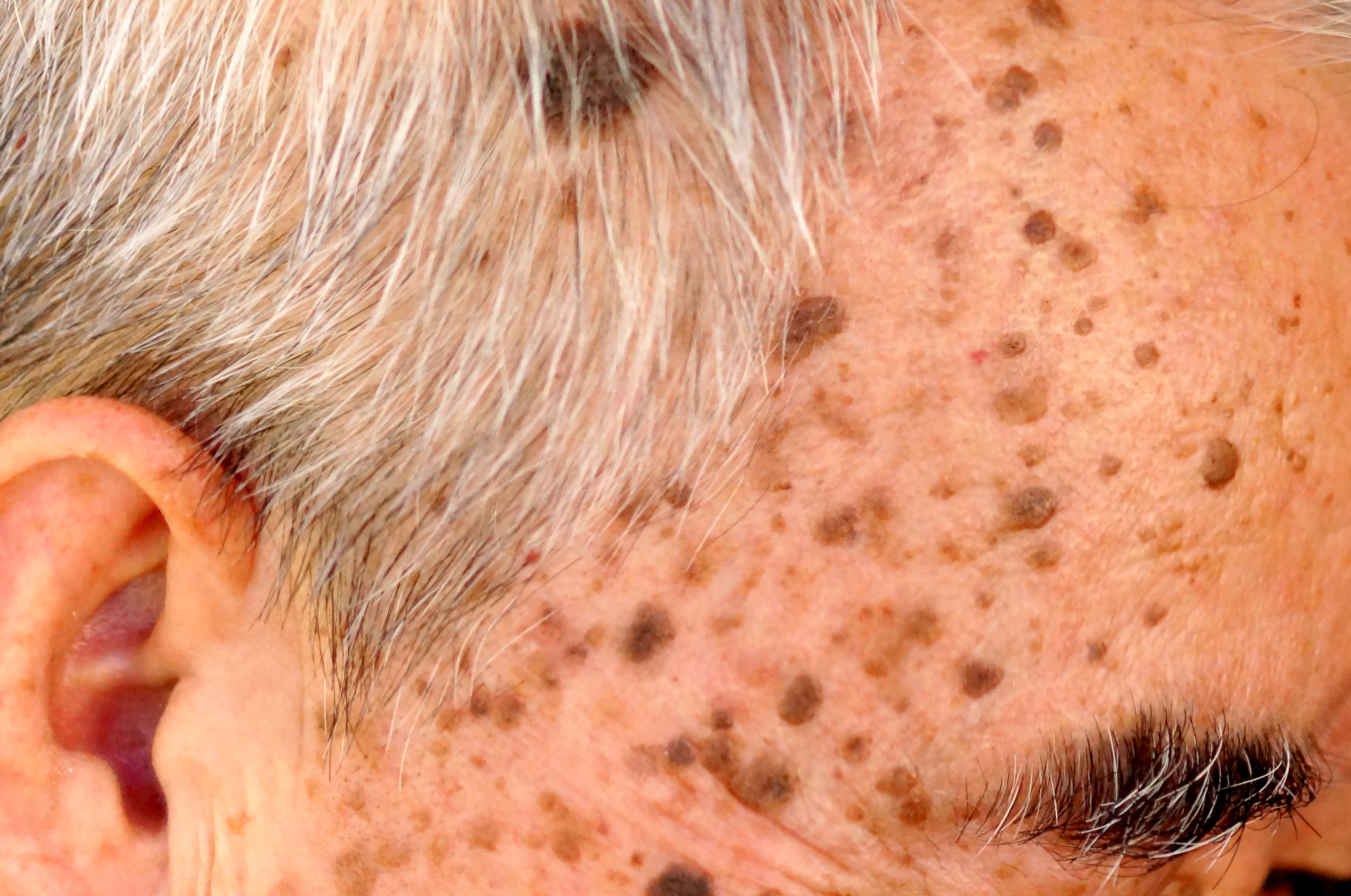Anytime we notice a new growth pop up on our skin, we likely have two reactions:
First, is this cancer?
Second, this looks bad — can I get rid of it?
If your skin growth turns out to be seborrheic keratosis, the answers are easy. No, it’s not cancer and, yes, it’s easy to remove.
Subscribe to Our Newsletter
Receive tips, discounts, invitations to events, and expert advice right in your inbox!
What Is Seborrheic Keratosis?
Seborrheic keratosis is a raised area on the skin. These spots look similar to a wart and vary in size — some are smaller than a pinpoint, others are bigger than a silver dollar. They also range in color from a pale, white hue to black. Most are tan
or brown. Often, they have a more waxy sheen than other skin growths and almost look like they are stuck on the skin.
But even though they’re unsightly, they aren’t dangerous. They’re benign — they aren’t cancerous, and they’ll never turn into cancer.
What Causes It?
You’ll likely notice these skin growths on arms, face, scalp, back, chest, and legs. What do those areas have in common? They’re all exposed to the sun. That’s why most dermatologists believe the sun triggers these growths.
But not everyone gets these wart-like growths from sun exposure. It’s also a matter of genetics. Some people are genetically predisposed to seborrheic keratosis. So, with their genetic background, exposure to the sun initiates the genes that cause
these places to form. If you start getting these skin growths, look at your family — others likely have them too.
What Treatment Do I Need?
Seborrheic keratosis can be pretty unsightly, so we remove them. Similar to wart removal, we freeze the growth, which causes frostbite that kills the cells. Then, within two weeks, it turns to a scab and falls off.
Can I Treat This at Home?
Don’t try this at home. Over-the-counter freezing treatments contain butane, while doctors use liquid nitrogen.
It may seem like freezing is freezing, but the difference in temperature hugely influences its effectiveness.
See, liquid nitrogen is 320 degrees below zero while butane spray only drops to 80 degrees below zero — and that’s not cold enough to cause the depth of frostbite needed to kill the cells. Liquid nitrogen, however, can cause a lot of damage in
untrained hands. So leave the freezing to the professionals.
Anytime you notice a growth on your skin, schedule a visit to the dermatologist to have it checked out. Sure, this type of skin growth isn’t dangerous, but a dermatologist can make sure it’s correctly identified. Then they can remove it, so you
never have to worry about it again.

Dr. R. Todd Plott is a board-certified dermatologist in Coppell, Keller, and Saginaw, TX. His specialization and professional interests include treating patients suffering with acne, identifying and solving complex skin conditions such as psoriasis, rosacea, atopic dermatitis, and identifying and treating all types of skin cancers. In his spare time, Dr. Plott enjoys cycling, traveling with his wife, and spending time with his children and new grandson.
Learn more about Dr. Plott.

